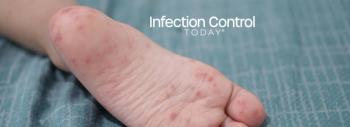
HHS Supports Study of Zika Virus Blood Screening Test
The development of a test to identify whether donated blood is infected with the Zika virus is moving forward with support from the U.S. Department of Health and Human Services’ Office of the Assistant Secretary for Preparedness and Response (ASPR) and the Office of the Assistant Secretary for Health (OASH).
On March 30, the Food and Drug Administration (FDA) announced the availability of an investigational test to screen blood donations for Zika virus. The test is manufactured by Roche Molecular Systems, Inc., based in Branchburg, N.J.
Today’s agreement with ASPR’s Biomedical Advanced Research and Development Authority (BARDA) supports a clinical study to evaluate the sensitivity and specificity of the blood donation screening test in its actual use. The study is necessary to apply for FDA approval for commercial marketing.
“BARDA staff has worked closely with our partners at FDA and the Office of the Assistant Secretary of Health to ensure the continuity and safety of the U.S. blood supply,” said Dr. Richard Hatchett, BARDA’s acting director. “Today’s award to Roche is an important step toward securing the safety of the blood supply in Puerto Rico and in the rest of the United States.”
Most people infected with Zika do not have symptoms and may donate blood not knowing that they are infected. There have been reports of probable cases of transfusion transmission of Zika virus in Brazil, and those cases currently are being investigated. Having an accurate blood donation screening test will help ensure that infected blood is removed from the blood supply.
Under the one-year, $354,500 contract, Roche will study blood samples to confirm whether the test accurately and reliably detects and identifies Zika virus, even when present in very low concentration in donor blood.
Advancing the development of the Zika virus blood donation screening test is part of BARDA’s integrated portfolio for advanced research and development, innovation, acquisition, and manufacturing of vaccines, drugs, diagnostic tools, and non-pharmaceutical products for public health emergency threats. These threats include chemical, biological, radiological, and nuclear agents, pandemic influenza, emerging infectious diseases, and antimicrobial resistance.
Source: HHS
Newsletter
Stay prepared and protected with Infection Control Today's newsletter, delivering essential updates, best practices, and expert insights for infection preventionists.





